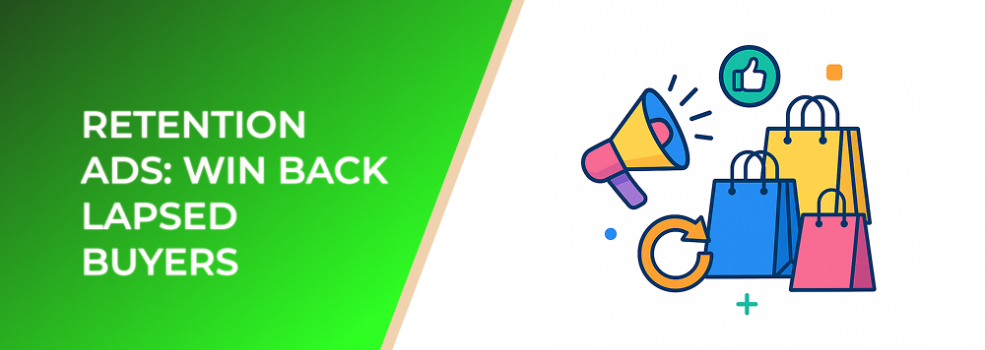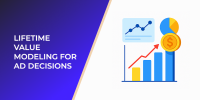Brands often focus heavily on acquisition, but the real profit lies in bringing back people who already know and trust your product. Lapsed buyers—customers who purchased before but haven’t returned within your typical repurchase window—represent one of the highest ROI opportunities in digital advertising.
Retention ads are designed to re-engage these cold-but-familiar users and turn them into active buyers again.
Why Retention Ads Work
People who have bought from you before convert at far higher rates. Statistics consistently show:
-
Returning customers spend 67% more than new customers on average.
-
Even a 5% increase in retention can boost profit by 25–95%, thanks to reduced acquisition costs and higher lifetime value.
-
Targeted win‑back campaigns typically deliver 30–60% lower CPA compared to cold prospecting.

Returning customers spend 67% more on average than first-time buyers
When done correctly, retention ads maintain revenue predictability and reduce dependency on new customer acquisition.
Identifying Lapsed Buyers
Before running retention ads, define what “lapsed” means for your business. Common segments include:
-
30–60 days inactive: Fast‑moving consumables
-
60–120 days inactive: Beauty and cosmetics
-
120–365+ days inactive: Electronics, fashion, specialty products
Using your purchase cycle data, create custom segments such as:
-
Users who purchased 1 time but didn’t return
-
Loyal customers who suddenly dropped off
-
High‑value buyers who haven’t purchased in their usual timeframe
These segments respond differently and should be messaged accordingly.
Retention Targeting Strategies
1. Custom Audience Based on Purchase History
Upload or sync past buyers and filter them into lapsed windows. These audiences are stable, accurate, and cost-efficient.
2. Engagement-Based Lapsed Users
Target users who interacted with your site or ads but haven’t purchased in a while. These warmer lapsed users often deliver strong ROAS.
3. Product-Specific Win-Back Audiences
Target users based on specific SKUs or categories they previously bought. This works well for replenishable items.
4. Cross-Sell Retention
If a customer bought Product A, run ads for Products B, C, or D based on complementary categories.
Creative That Re-Activates
1. Reminders & Replenishment
For consumables, simple reminders such as "Time to restock" consistently lift return purchases.
2. Personalized Recommendations
Show products based on what the customer bought before. Personalized creatives lift engagement significantly.
3. Exclusive Offers for Lapsed Buyers
Limited‑time discounts for return customers often drive strong recovery rates. Win‑back emails show that 10–25% of lapsed customers return when offered a personalized incentive.
4. Social Proof Refresh
Show new reviews, updated user photos, or top-seller badges to rebuild interest.
5. New Arrivals or Product Updates
If someone hasn’t bought in a while, highlighting new options works well.
Suggested Offer Strategies
-
Bundle pricing for returning customers
-
Free shipping incentive for second purchase
-
Loyalty membership invitation after win‑back
Measuring Success of Retention Ads
1. Repeat Purchase Rate
Track how many lapsed buyers purchase again within 30–90 days.
2. Cost Per Recovered Customer
Retention ads generally achieve 2–4× better cost efficiency than acquisition.
3. Incremental Revenue
Measure revenue uplift from returning customers versus baseline.
4. Customer Lifetime Value

Bar chart comparing average spend: New customers (100%), Returning customers (167%)
Retention campaigns often increase LTV significantly because each win‑back resets the customer cycle.
Best Practices for Retention Campaigns
-
Refresh creatives every 30–45 days to prevent fatigue.
-
Test urgency-based vs value-based offers.
-
Segment audiences by purchase history, not just time lapsed.
-
Exclude very recent purchasers to avoid wasted ad spend.
-
Maintain a consistent frequency—typically 2–4 impressions per day works well.
Final Thoughts
Retention ads are one of the fastest ways to boost profitability without increasing acquisition budgets. They take advantage of audiences who already trust your product, helping you recover revenue, strengthen loyalty, and grow LTV.

